The release of Android 12 Beta 3 is an important moment for the Android 12 development process. This is because Android 12 Beta 3 heralds the arrival of the final Android 12 APIs, and the official SDK. In other words, don't expect to see many changes to the software until the release of Beta 4 - which is expected by August 2021 - by when Android 12 will enter the stable stage of its lifecycle.
As for the new Android 12 features on Beta 3, these include things like scrolling screenshots, screen rotation improvements using the front camera, and Material YOU optimizations. Below, we show how these and other new Android 12 features work.
Take a shortcut:
Android 12 | Security and Privacy
Security and Privacy were all the buzzwords at the Google I/O 2021 keynote address. Google had hinted about this possibility since the days of the early developer preview when it talked about offering increased control over cookie behavior. And then we had information about more security in the Play Store. However, we now have a better understanding of how this applies to your phone.
Greater control over cookie behavior
Android 12 will offer more modern controls over cookie behavior, following the pattern of changes in Chrome and other browsers. This way, the WebView engine used by third-party apps will adopt Google's new browser setting, called "SameSite," which can help reduce some tracking. According to Google's VP of engineering Dave Burke, this "will give users more transparency and control over how cookies can be used across websites."
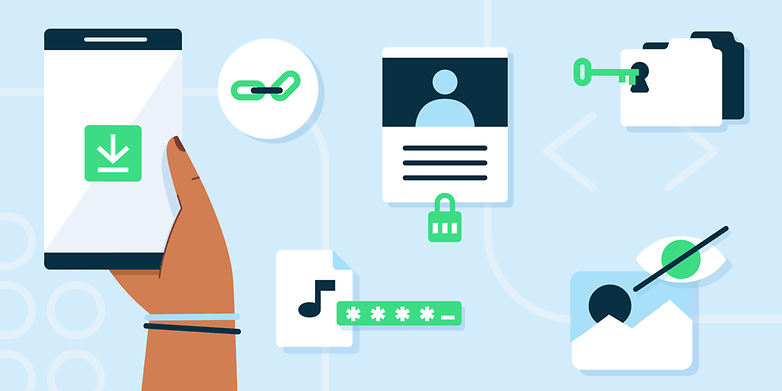
Google Play Store becomes more secure
In May 2021, Google announced that it will offer users more transparency when it comes to the their personal data. Google also said it will reveal how this data is accessed and used by apps. Google, clearly, seems to have taken a cue from Apple which implemented something similar with iOS 14.5 and the new App tracking transparency (ATT) initiative.
With Android 12, app developers shall be required to clearly inform users about the type and reason for the data collection. In addition, they shall also be needed to inform whether third parties can and will have access to this data. Going one step further, Google also announced a "Privacy Dashboard" about which we shall learn in the next section.

Privacy Dashboard
The Privacy Dashboard is a new option in the Android 12 settings system, where you can easily check the list of apps that have had recent access to your phone's camera, microphone, and location. The entire idea behind this being that Google wants to give people more control over their privacy.
Apart from making it easier for users to check how often an app has accessed components like the camera, microphone and location, the dashboard also lets you grant and revoke permissions quickly and easily.
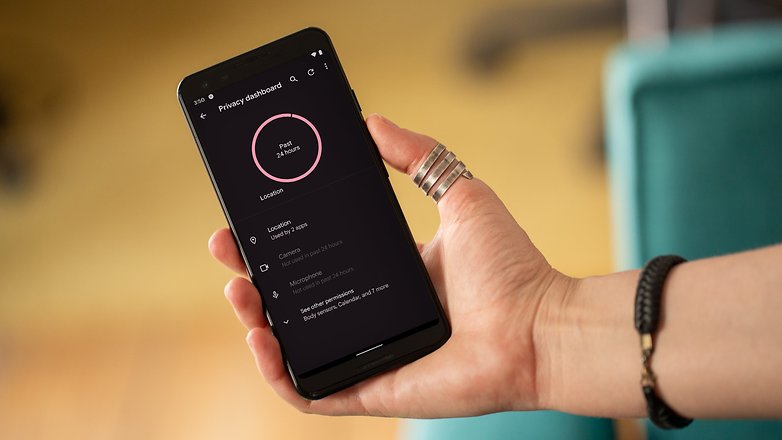
Also, finally, we'll have simplified notifications sent to let you know when an app is activating the phone's camera or microphone. It took some time for that to happen, but thanks Google, anyway! On Android 12 Beta, we noticed that the large camera and microphone symbols were replaced in favor of a much smaller, less obtrusive green indicator light that lights up whenever an app accesses the camera or microphone.
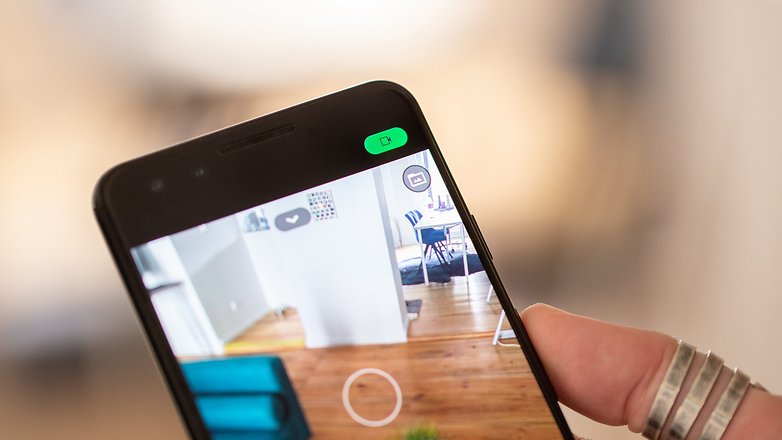
Optimized location permissions dialog
When it comes to location permissions, Android 12 is more transparent when compared to its predecessors. With Android 12, the location access permission dialog brings more detailed visuals about the difference between granting the device's precise or approximate location to an app. This is because not all apps need to know your precise location. Weather apps, for example, can do just fine if you grant them your approximate location.
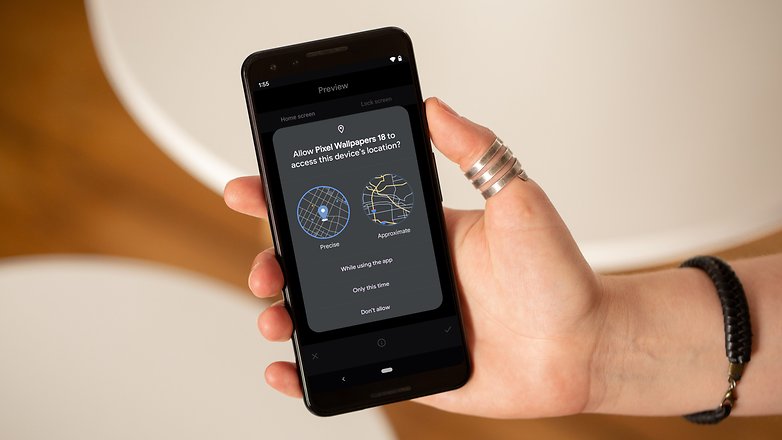
Android Private Compute Core
Another addition to Android 12 is the Privat Compute Core that enables the use of Artificial Intelligence (AI) driven features while maintaining a "high level of privacy". During Google I/O, we saw that the Private Compute Core can enable features like Live Caption and Now Playing, where all audio and language processing takes place on the device, isolated from the network to preserve your privacy.

By the way, the Google executive was keen to point out that the protections in Private Compute Core are open source and fully verifiable by the security community.
Privacy Indicator APIs in WindowInsets
Have you come across apps that have controls and menus that conflict with permanent, default menu options on Android? With Android 12 Beta 3, Google has implemented something known as a privacy indicator API to WindowInsets that will minimize such issues. The new API will allow apps "see" the privacy indicators and their placement and make necessary adjustments that will prevent system controls be obstructed by them.
Android 12 | Material You and the new customization experience
Android 12 went through a complete overhaul in terms of design and we had the User Interface upgrade with Material You, the revision of the operating system's visual language. With that, Android 12 is even more customizable. In fact, in my previous Android 12 test I explain better how the visual changes made the OS more consistent.
With Material You, Google looks at the references of its own ecosystem of products to assemble from the new Widgets to the Music Player. With this, Android now further explores the colors, shapes and features of the system to deliver a global software experience.
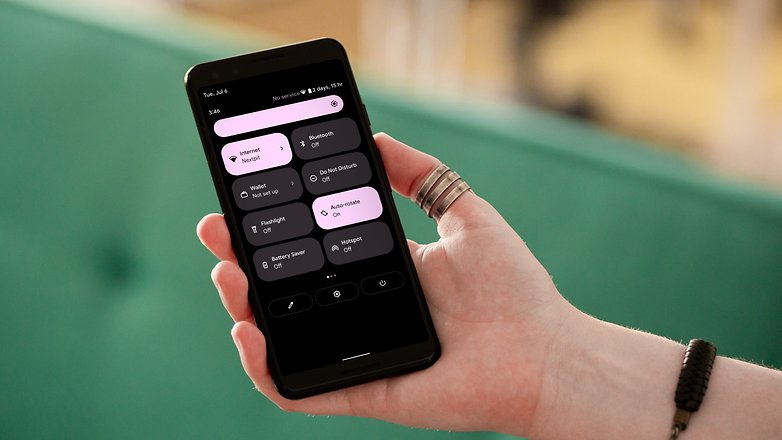
Native theme option
Native customization of color patterns offers more possibilities on Android 12. That's because the software now recognizes wallpaper color patterns and automatically selects the shades used in the system. However, this analysis is not done using purely the colors of the image, but the different lighting tones, which allows to create a greater contrast between the icons in the notification bar, for example, or even the clock that appears on the lock screen and system buttons.
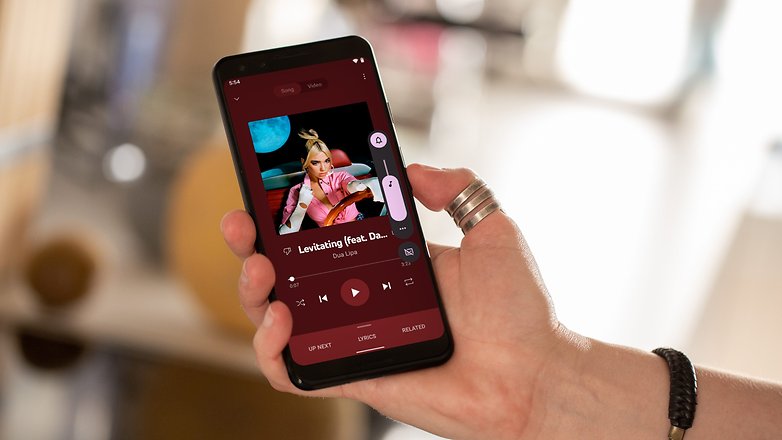
Staying with customization, the application grid now allows you to align the app icons on the device screens in 4x5 size. Additionally, the Wallpaper and Style option is now available from within system settings.
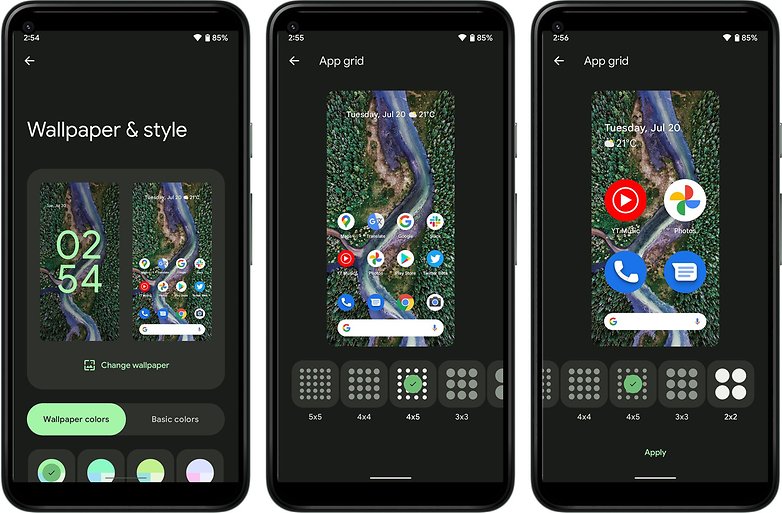
More fluid animations
In Material You, we also have a series of new animations that manage to make the use of Android more pleasant in general. The splash screen, for example, is now more fluid thanks to the addition of full-screen visual effects. You will especially notice this in the first seconds of launching an application.
These animations appear whenever the service is launched for the first time. Thus, when opening Google Drive, for example, the icon expands until it reaches the four corners of the screen while the service loads. The animation ends at the same time the main app screen is opened. See how this works in the video below:
Redesigned, more functional Widgets
Android 12 also sees improvements on how the widgets work. Although they are not available in Beta 3 yet, what we do know is that the Android developer team has redefined the functions of these apps. So, instead of just having a shortcut to Google Keep, we now have shopping lists right on the screen. Checking the battery status of devices connected to the device will also be smarter, even rivalling the quality offered by the best widgets found on iOS today.
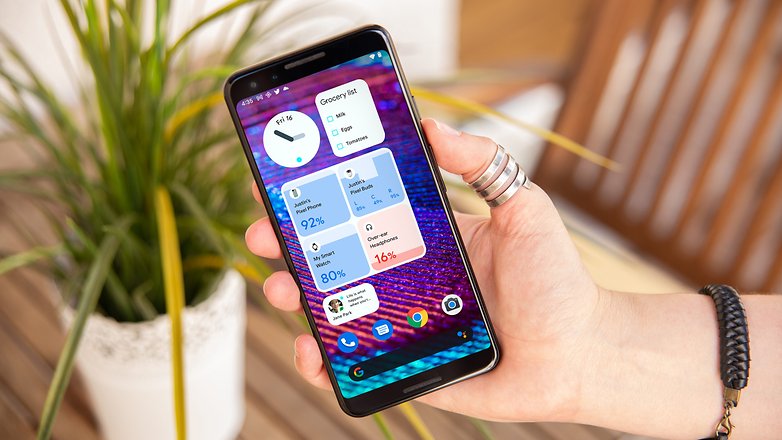
Using the "Power" button to activate Google Assistant
The use of a specific button to activate Google Assistant is not new on many Android devices that often have an extra button (Moto G10, for example). In Pixel 3, for example, just press the device to launch the wizard. However, now we may have an extra lane next to the Turn on mobile button.
One-handed mode
Android smartphones other than the ones running stock Android have long had the one-handed mode. Even iPhones (iOS) now supports one handed mode (albeit under the "Reachability" name). This left stock Android as the only major mobile OS to not bake this feature by default. Well that isn't the case any longer as a one handed mode is part of Android 12 features list.
To use this feature, you will need to activate the same by going into Settings > System > Gestures > One-handed-mode. Once activated, it is possible to bring the content from the top of the screen to the middle of it through a gesture from the device's navigation bar. It's very reminiscent of the iOS "Reachability" function and I have to say it's quite functional.
You can go back to using the device normally from a gesture in the navigation bar as well.
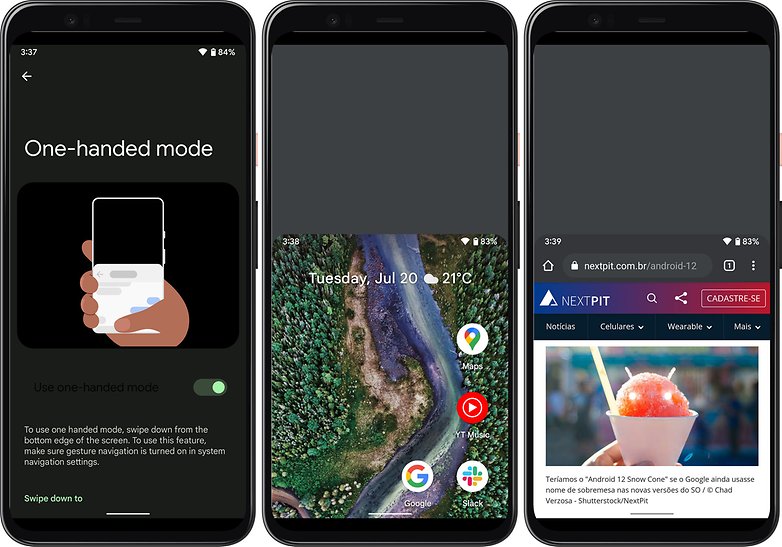
Nearby Wi-Fi
Another feature addition with Android 12 is something known as Nearby Wi-Fi. This feature makes the task of sharing Wi-Fi login credentials to others a seamless, easy task. As evident from the naming scheme, this feature will work alongside the 'Nearby Share' feature that has been around for a while.
I tried the new Nearby Wi-Fi feature, and found it very easy to use. Today, on Android 11, the system only generates a QR code that other smartphone users will need to scan. On Android 12, however, all the data is sent wirelessly to a device and all you need to do is to identify a device in proximity.
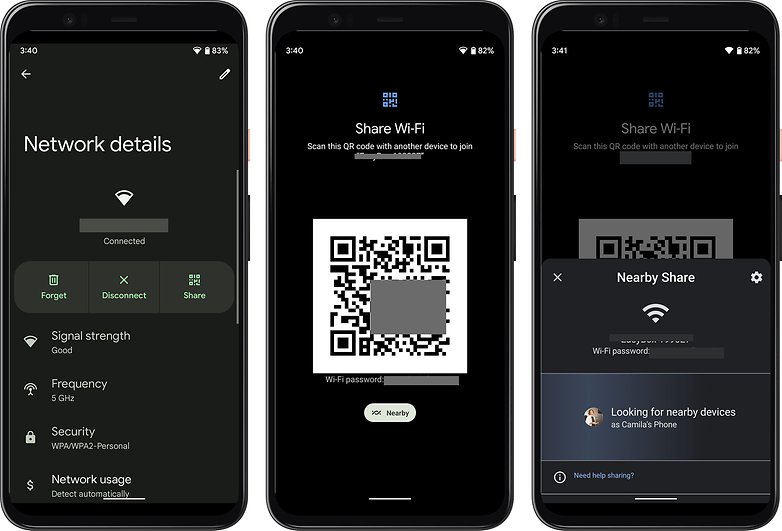
Scrolling screenshots
Among the most requested Android 12 features was the addition of native support for scrolling screenshots on stock Android. Google has finally given into popular demand and Android 12 Beta 3 - for the first time on stock Android - introduced the scrolling screenshot feature.
It is not perfect as we figured that it still does not allow you to print web content. Anyway, to know how the scrolling screenshot feature works on Android 12, check out our video embedded in this article.

In addition, Google facilitates the insertion of images, videos and other content in the ecosystem apps on Android 12. To this end, it brings a new unified API that allows you to accept content from any source: clipboard, keyboard or through the simple gesture of drag and drop.
So, in addition to the scrolling screenshot, we also have more editing possibilities on Android 12, as it is now possible to use emojis and drawing features before sharing the screenshot on any social channel or messenger.
On-device search
This is yet another feature that has been around on other Android-based operating systems for quite a while but is only now being natively implemented on stock Android. With this feature, you will be able to search for apps (and other locally stored data on your phone) using a dedicated search widget.
While the documentation for this feature was spotted a few months ago, it is only now that we see Google finally implementing it on Android 12 Beta 3. Again, we are unsure at this time if the on-device search feature shall be integrated with the existing Google search widget or a completely new local search widget.
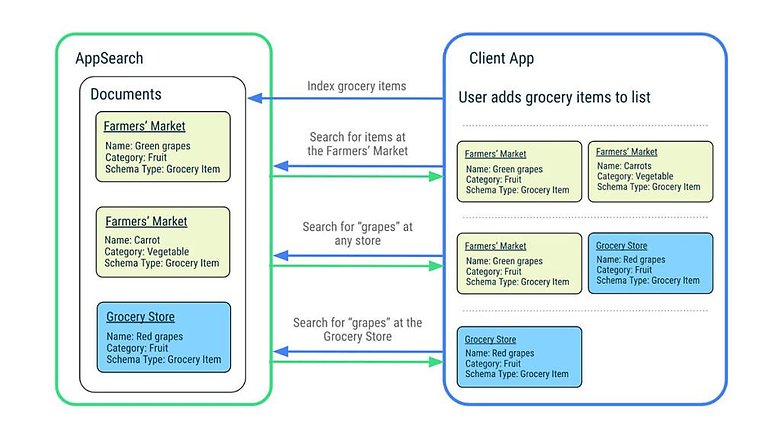
Faster autorotate and face detection
Android smartphones are yet to master the art of fast, accurate autorotate and it seems Google is committed to fixing this nagging issue with Android 12. Google has confirmed that with Android 12 Beta 3, the auto rotate feature has been made faster - and most importantly, much more accurate. Google chose an interesting path to arrive at the desired results, though.
Simply put, Google has decided to use the front camera on the phone to 'detect' your face (and therefore evaluate its orientation). If all goes well, you can say goodbye to that annoying issue of your phone being confused whether to remain in portrait mode or switch to landscape while you're switching between sitting and lying down.
To allay any privacy concerns arising out of it Google adds that the new, enhanced autorotation features are all processed on the device - aided by the new Private Compute Core.
Game Mode API
It is no secret that Google has been working on a new Game Mode for devices running stock Android. Previously, we have read reports of a new gaming toolbar that may come to Android 12. Following the release of Android 12 Beta 3, we know that the Game Mode and gaming toolbar are all part of a Game dashboard feature that is set to debut with Android 12.
These new features are housed within a brand new "Game" menu. From this menu, users can go onto the Game Optimization option where they can set the performance level you need depending on how and where you are. As of now, there are three options here: Performance, Standard, and Battery Saver.
You can, for example, play the game in the battery saver mode in case you know you that your phone may not hold charge by the end of the day and you forgot to bring your charger with you.
The Game menu also has quick toggles to take screenshots and record gameplay videos and even an FPS counter.
New Emojis
As usual, a new version of Android always brings new Emojis. This time, we're talking about the figures included in Emoji 13.1, which should be included on devices in 2021. In a recent update, Google also indicated that they are working on hundreds of the new fun icons that have been improved.
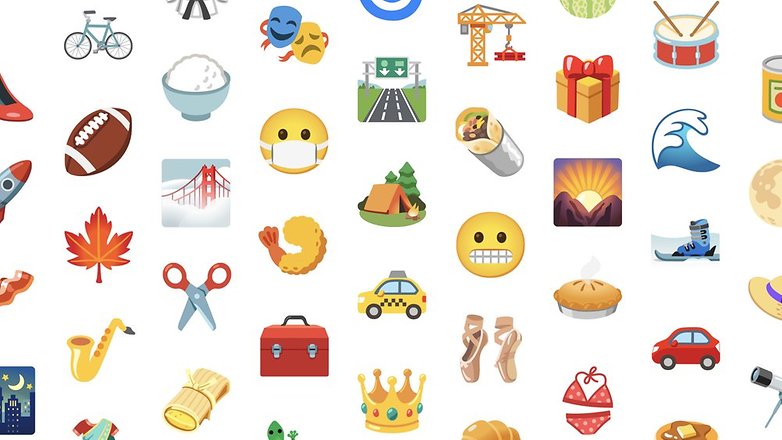
Android 12 | Android Ecosystem
With the announcement of Android 12, Google also reaffirmed its focus on Google Play Security updates. A part of Google's Project Mainline, the aim is to improve the delivery of security fixes and updates using Google's popular app store. This improvement is of most relevance to non-Pixel devices, and by that definition, most of the Android ecosystem. This is because in theory, every device running Android 12 will benefit from this and receive monthly security updates.
As things stand today, most manufacturers do not guarantee issuance of monthly security patches. To achieve this, Android Runtime (ART) will be added as an updatable Mainline module in Android 12.

Android 12 for tablets, TV, and foldables
Among the new features of the next OS, we will have an optimization of the system for tablets, foldable devices and TVs. Personally, I believe that Android is still far behind systems like iOS, for example, in relation to the suitability of apps for everything beyond the smartphone.
However, I also understand that this kind of improvement depends a lot on the effort of the app developers. So, I'll wait until the release of the final version of the system to share my opinion on this topic.
Android 12 | Other features, rumours
Some of the functions mentioned below were not mentioned during the Google I/O presentation. Some of these, in fact, are still rumors and could be implemented only when the final version rolls out later this year.
Files and compatibility
Due to the popularity of the HEVC video format, which offers significant improvements in quality and compression over older codecs, most apps should be compatible with it. However, this is not the case in reality.
There is talk about Android 12 bringing a feature that allows all apps to support HEVC. In order to do so, incompatible apps will have their files converted in real-time to AVC, a widely used format. According to Google, the feature will be active on all devices that use the HEVC format for video capture.
We will also have support for the AVIF image format, which offers a significant reduction in image file size while sill maintaining quality similar to the good old JPEG format.
Optimized Notifications
Another interesting change is regarding notifications of device resource usage by background apps. Currently, Android requires apps to display a notification when they are running an activity in the background, but in Android 12 this is expected to change. The idea here is to eliminate sending this notification if the background activity ends in less than 10 seconds. This should increase the performance of the devices and save battery life.
Haptic feedback
In addition, Android 12 should amplify the vibration function on smartphones with haptic feedback, an experience well known to those who use the DualSense controller from the PlayStation, for example. This means that on Android 12, apps will be able to offer haptic feedback via the phone's vibrate function.
According to Burke, the intensity and frequency of the vibration are derived from an audio session, allowing for a much more immersive gaming experience. More than that, we will have even more possibilities when it comes to the audio features of the devices.
Android 12 also offers support for MPEG-H playback and we now have up to 24 audio channels instead of just 8. With this, developers will certainly be able to be more creative regarding the audio effects of the apps. However, most of these features are yet to make it to the beta.
Another thing I notice with Android 12 was the media player that has largely remained unchanged. Well, the design has somewhat changed and now follows the the visual alignment of the system in totality.
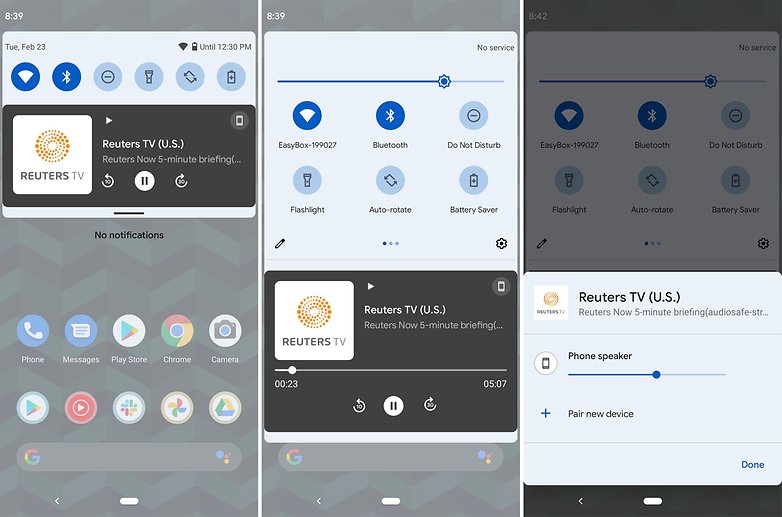
Using apps in pairs
The "App Pairs" feature had already leaked in the first preview, but it still seemed very premature and extremely unstable. This would be Google's chance to review the split-screen multitasking function of the operating system.
Even though Android 11 supports this feature, the implementation is generally lacking especially when compared to similar options offered by other Android skins. In the image below, we have a current example of the feature in Android 11 and a montage of what using apps in pairs should look like:
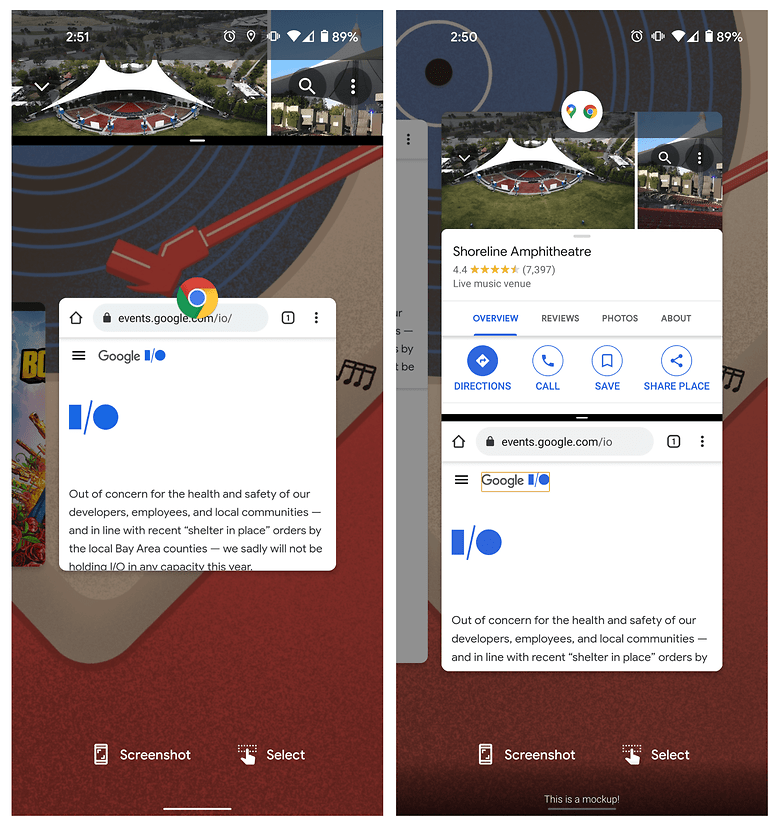
As we can see above, Google should make it easier to use apps in pairs, given that it will start offering the option right in the multitasking menu, something that doesn't happen today.
What the leaked build now shows is that when two apps are being used in pairs, by clicking on the separator bar, it will be possible to invert the position of each of them, thus allowing to be able to quickly change settings.
These are the main functions of Android 12 so far. The Android team's forecast is to consolidate the final features of the operating system in August this year, with the release of Beta 4. As soon as that happens, we will update this article.
As this is an unstable version of the operating system, we do not recommend installing Android 12 on your primary smartphone.
So, what did you think of the possible new features of Android 12 so far? Have any of them really caught your attention? Share your opinion with our community in the comments below.
Read More Open link https://ift.tt/3e2z5RV
0 Response to "Android 12 features: Here's everything you wanted to know"
Posting Komentar